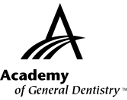|
Exercise No. 361
Subject Code: 013
Microbiology
The 15 questions for this exercise are based on the article, Investigation of antibacterial efficacy of Acacia nilotica against salivary mutans streptococci: a randomized control trial, on pages 23-27. This exercise was developed by Jean Carlson, DDS, FAGD, in association with the General Dentistry Self-Instruction committee.
|
Reading the article and successfully completing this exercise will enable you to:
- identify the physical properties of Acacia nilotica (AN);
- recognize the action of AN against mutans streptococci (MS); and
- understand the efficacy of chlorhexidine mouthrinses compared with AN mouthrinses.
|

